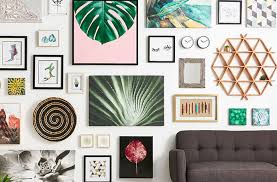Hanging Pictures In Highlands Ranch, CO and surrounded South Denver Metro areas
Do you have several pictures or art work to hang on a wall and need some ideas on how and where to arrange them in your home? Below are some thoughts and ideas that might facilitate your decisions.
Click Here to contact Handy Helper Home Solutions for hanging your pictures.

Arranging Pictures On a Wall
Plan picture groupings beforehand. Before you hang multiple pictures together, make a blueprint for your group of pictures by lightly tracing the pictures’ outlines with a pencil, otherwise, lay your pictures down on a roll of paper and cut squares around them. Tape these squares to the wall to give you an idea of how your arrangement will look when the pictures are actually hung on the wall. It’s much easier to adjust paper squares than to re-hang your pictures.
Hang big pictures first. Big pictures deserve a prominent position in the room. Hang them at eye-level or higher on a wall where they’ll be noticed. Give them priority positioning – a great picture can double as a room’s centerpiece. Don’t put them too close to any of the room’s corners or it may give your art a squished in look. A foot or two of room should suffice.
- Provided your picture doesn’t absolutely dwarf other, smaller pictures, you can use it as part of a multi-picture arrangement. If you’re not sure how to arrange your big picture as part of a group, a good idea is to put it in one of the lower corners of the arrangement, with the second-largest picture in the upper corner opposite it. Line smaller pictures up in the two unoccupied sections of the imaginary rectangle containing both big pictures.
Group smaller pictures in rows or clusters. You don’t need to center rooms around large landscape paintings or portraits. When grouped together in visually-pleasing patterns, a cluster of smaller pictures can make for an eye-catching arrangement. Adjust your arrangement to suit the needs of the room you’re in. Tight, straight vertical or horizontal rows can make the most of limited wall space, while large cloud-like arrangements incorporating pictures of different sizes can give a room a modern feel.
- The most important thing to remember while making picture clusters is to make sure that the edges of every frame are at precise ninety-degree angles to each other. Also make sure the distance between pictures is uniform throughout your arrangement. When creating a grouping, choose an odd number of items so that there is a middle and a mirror image on both sides
- Not every picture in a group needs to have identical frames, however there should be an overarching theme for all the frames in a certain cluster.
Fitting Your Pictures to Your Room
Choose pictures with appropriate style for your room. Different pictures will create different visual impressions in a given room. Try to match the picture to the purpose for the room. Classical landscape style paintings and portraits are great for living rooms, while smaller family photos are great for halls, staircases, bedrooms and bathrooms. Impressionistic paintings of fruit or cookware are a good addition to kitchens.
Respect the space by not crowding your walls. One of any room’s biggest assets is its sense of space. Don’t let your pictures obstruct a room’s natural sense of space. Many walls are best-suited by only one or two pictures or none at all.
Be conscious of furniture placement. Furniture and wall art work together to form a room’s sense of space. Coordinate them to make to the most of your living space. Try to place pictures in places people will naturally look without interfering with the normal functions of the room.
- Follow the two thirds rule – art placed above a piece of furniture should be at least two thirds as wide as the furniture itself. For example, a ten foot wide sofa should have at least six and a half feet of art above it. This rule applies to individual pictures as well as clusters of smaller pictures.
Hanging Pictures On A Wall
Picture Hanging Placement.
- People shouldn’t strain themselves to view the artwork. By placing the center of the artwork at eye level, it ensures the art can be viewed comfortably.
- The art’s focal point should be at the 57-inch mark. This is not where it will hang from, so you will need to determine where to place the hangers. The first step is to measure 57 inches from the floor and mark it on the wall. Next, find the focal point of the artwork by measuring its height and dividing by two. Measure the top of the artwork to the tightened hanging wire or hook it will hang from. Subtract this number from the focal point number. Take the new number and measure that distance above the 57-inch mark. This is where the hanger should be placed, so mark this spot.
- When hanging artwork above furniture, mantles, or other obstructions, the eye level rule (or 57-inch mark) doesn’t always apply. The bottom of the frame should be between six to eight inches above the top of the feature. Some designers recommend hanging pictures one palm width above the top of the couch.
- When hanging multiple works of art, treat each work in the collection as if it were one work of art. Anchoring multiple works around the 57-inch focal point will help the collection appear balanced. The ideal spacing between multiple artworks is 3 to 6 inches.
- The 57-inch number is a good average height, but if your eye level is different, be sure to use that measurement when hanging art. Every scenario is different, so at the end of the day, make sure you love the way your art is displayed.
Hanging Pictures and Artwork On A Wall
If you are looking to hang some pictures, artwork or a mirror, please contact me to help you with the installation.
![]()
CONTACT ME TODAY
Call (720) 432-1574
